Update: On Sep 18, 2023 Google & Apple decided to shut down exposure notifications. Learn more.
Exposure Notifications
The (Google/Apple) Exposure Notification (GAEN) system was a framework and protocol specification developed by Apple Inc. and Google to facilitate digital contact tracing during the COVID-19 pandemic. When used by health authorities, it augmented more traditional contact tracing techniques by automatically logging encounters with other notification system users using their Android or iOS smartphone. Exposure Notification was a decentralized reporting based protocol built on a combination of Bluetooth Low Energy technology and privacy-preserving cryptography. It was used as an opt-in feature within apps published by authorized health authorities. It was also optionally delivered via ENX, a combination of OS-level features and auto-generated apps, provided by Google and Apple. Originally unveiled on April 10, 2020, GAEN was first made available on iOS on May 20, 2020 as part of the iOS 13.5 update and on December 14, 2020 as part of the iOS 12.5 update for older iPhones. On Android, it was added to devices via a Google Play Services update, supporting all versions since Android Marshmallow.
Worldwide Adoption
Google/Apple policy requires that the technology can only be used by public health authorities. This is to help prevent abuse of the protocol and to avoid confusion or conflicts with other public health efforts within a jurisdiction. The map below shows the currently active jurisdictions around the world as of May 22, 2023.
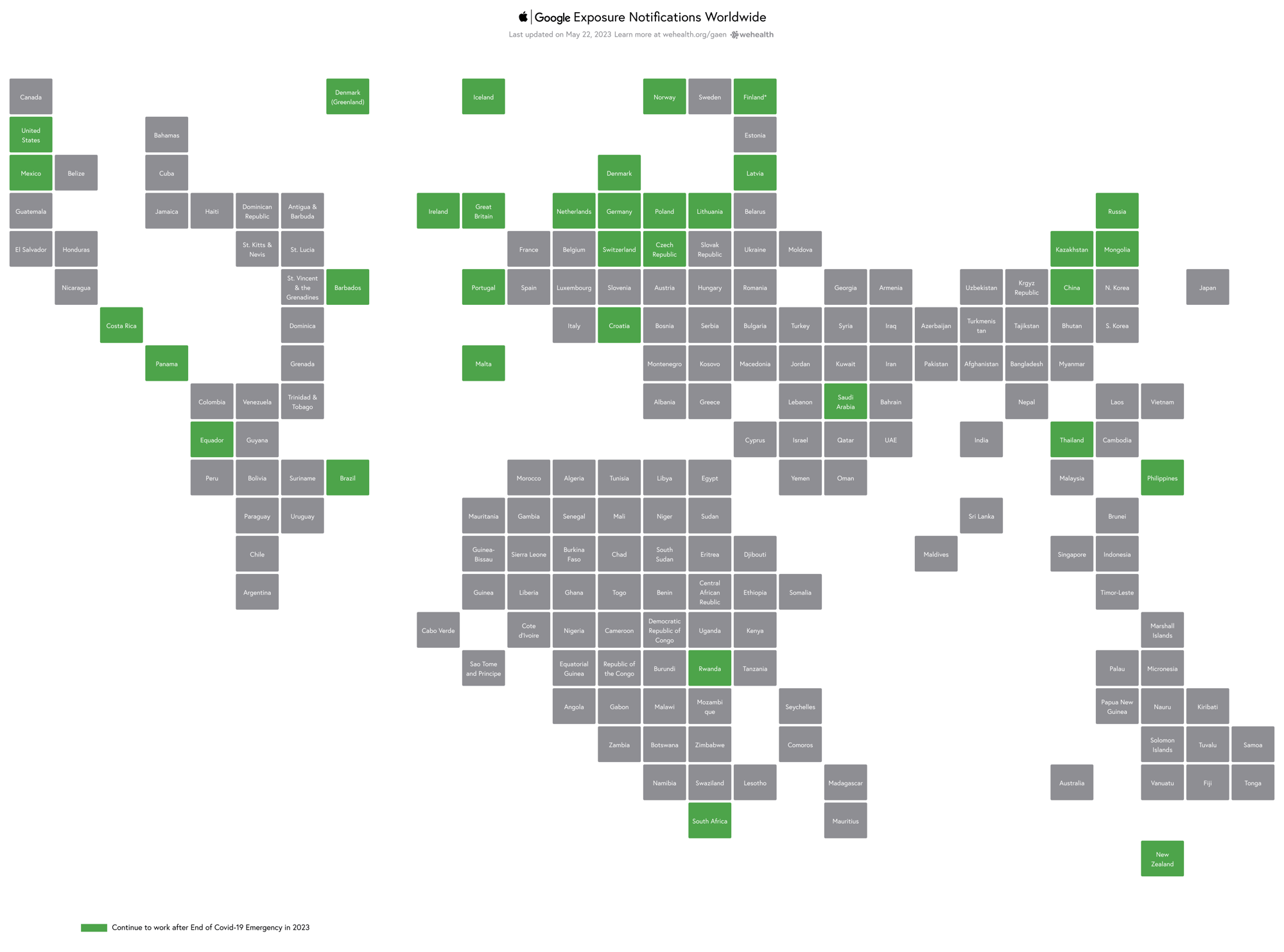
Adoption in United States
Google/Apple policy requires that the technology can only be used by public health authorities. This is to help prevent abuse of the protocol and to avoid confusion or conflicts with other public health efforts within a jurisdiction. The map below shows historical and current adoption of the technology in the United States.
Risk Model
The Apple/Google protocol is similar to the Decentralized Privacy-Preserving Proximity Tracing (DP-3T) protocol created by the European DP-3T consortium and the Temporary Contact Number (TCN) protocol by Covid Watch, but is implemented at the operating system level, which allows for more efficient operation as a background process. Other protocols are constrained in how they operate as they have no special privilege over normal apps. This leads to issues, particularly on iOS devices where digital contact tracing apps running in the background experience significantly degraded performance. The joint approach is also designed to maintain interoperability between Android and iOS devices, which constitute the sheer majority of the market.
The risk model helps calculate the probability of infection based on exposure to COVID-19. It combines duration of exposure, infectiousness of the infected individual(s), detected distance from the infected individual(s), and the confidence in the report type to calculate Meaningful Exposure Minutes (MEM).
Each Public Health Authority can configure their own infectiousness curves, distance weights, report type weights and MEM thresholds to determine if the exposure meets the threshold to notify the user.
Efficacy
Here's a list of published resources on the effectiveness of the technology.
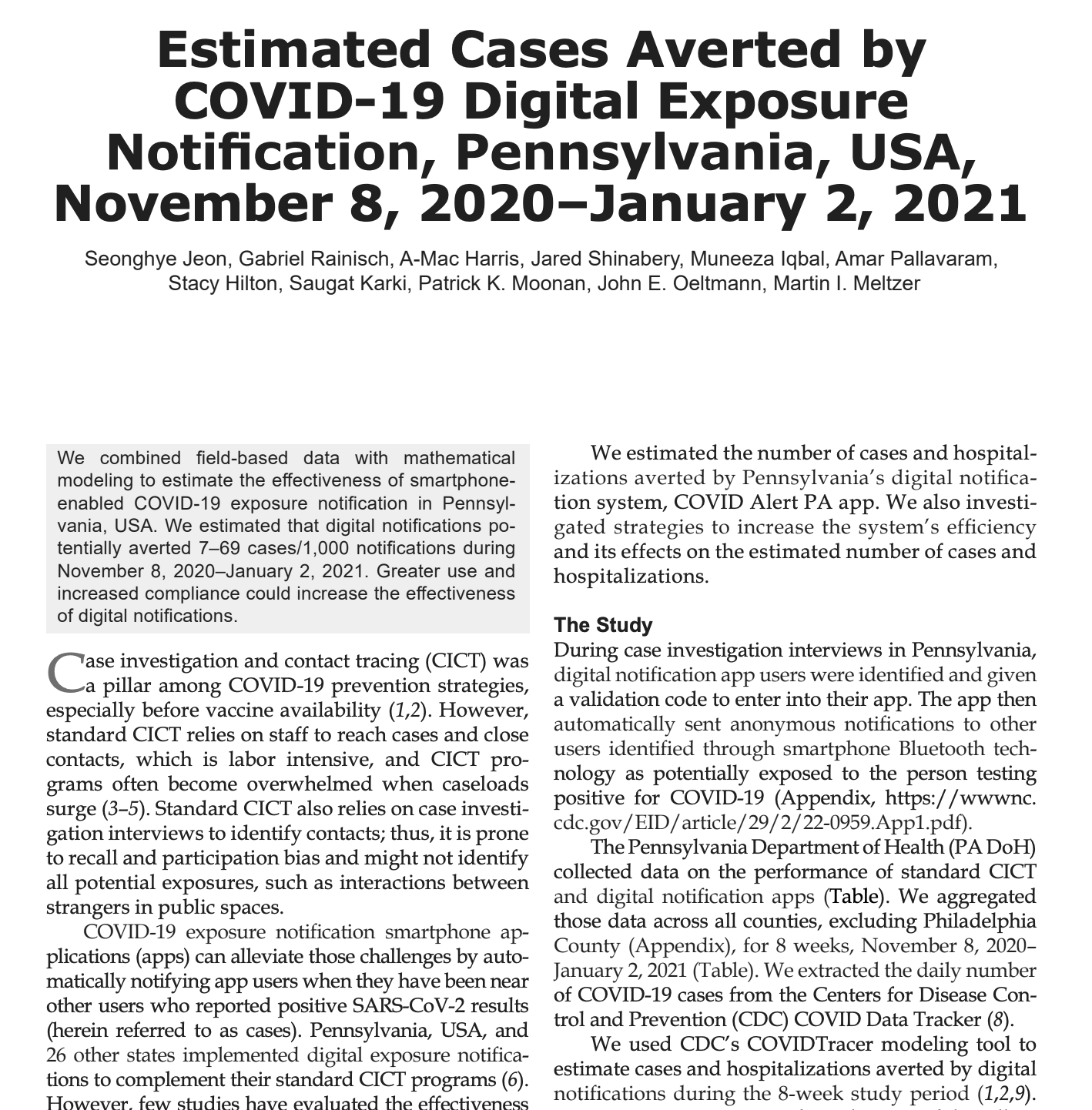
CDC Study: Estimated Cases Averted by COVID-19 Digital Exposure Notification, Pennsylvania, USA, November 8, 2020–January 2, 2021
Abstract: We combined field-based data with mathematical modeling to estimate the effectiveness of smartphoneenabled COVID-19 exposure notification in Pennsylvania, USA. We estimated that digital notifications potentially averted 7–69 cases/1,000 notifications during November 8, 2020–January 2, 2021. Greater use and increased compliance could increase the effectiveness of digital notifications.
Continue Reading
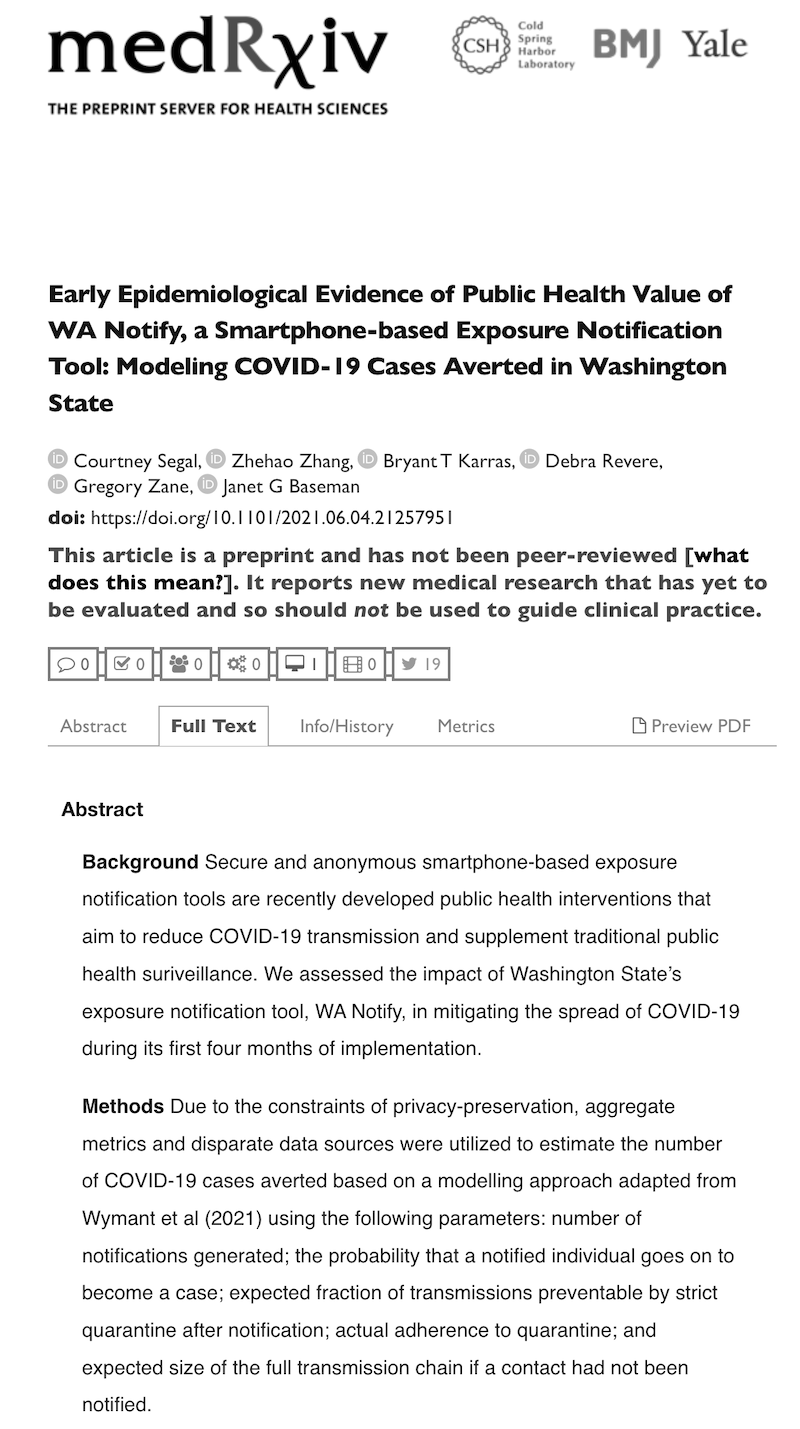
Early Epidemiological Evidence of Public Health Value of WA Notify, a Smartphone-based Exposure Notification Tool: Modeling COVID-19 Cases Averted in Washington State
Abstract: Secure and anonymous smartphone-based exposure notification tools are recently developed public health interventions that aim to reduce COVID-19 transmission and supplement traditional public health suriveillance. We assessed the impact of Washington State’s exposure notification tool, WA Notify, in mitigating the spread of COVID-19 during its first four months of implementation.
Continue Reading
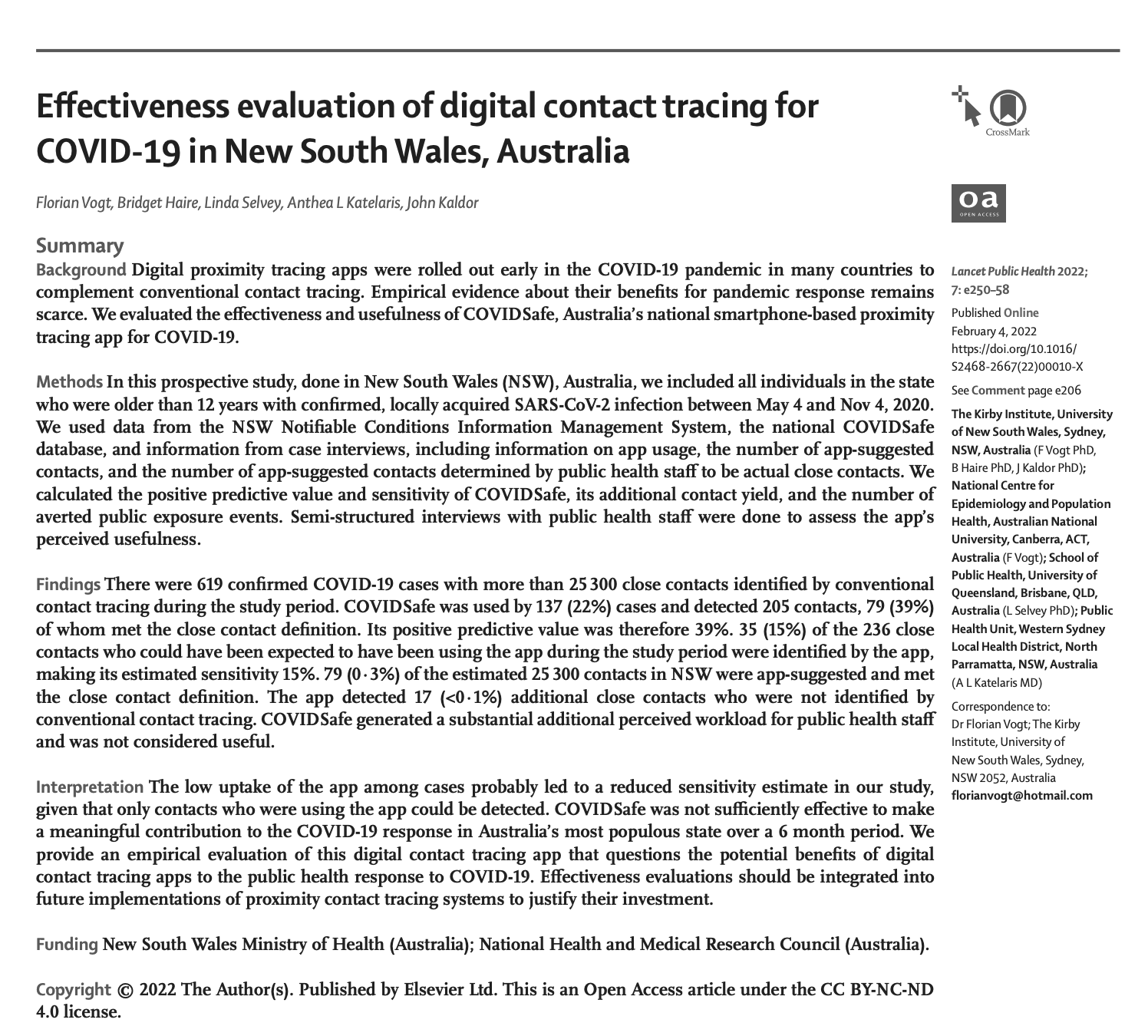
Effectiveness evaluation of digital contact tracing for COVID-19 in New South Wales, Australia
Interpretation: The low uptake of the app among cases probably led to a reduced sensitivity estimate in our study, given that only contacts who were using the app could be detected. COVIDSafe was not sufficiently effective to make a meaningful contribution to the COVID-19 response in Australia’s most populous state over a 6 month period. We provide an empirical evaluation of this digital contact tracing app that questions the potential benefits of digital contact tracing apps to the public health response to COVID-19. Effectiveness evaluations should be integrated into future implementations of proximity contact tracing systems to justify their investment.
Continue Reading
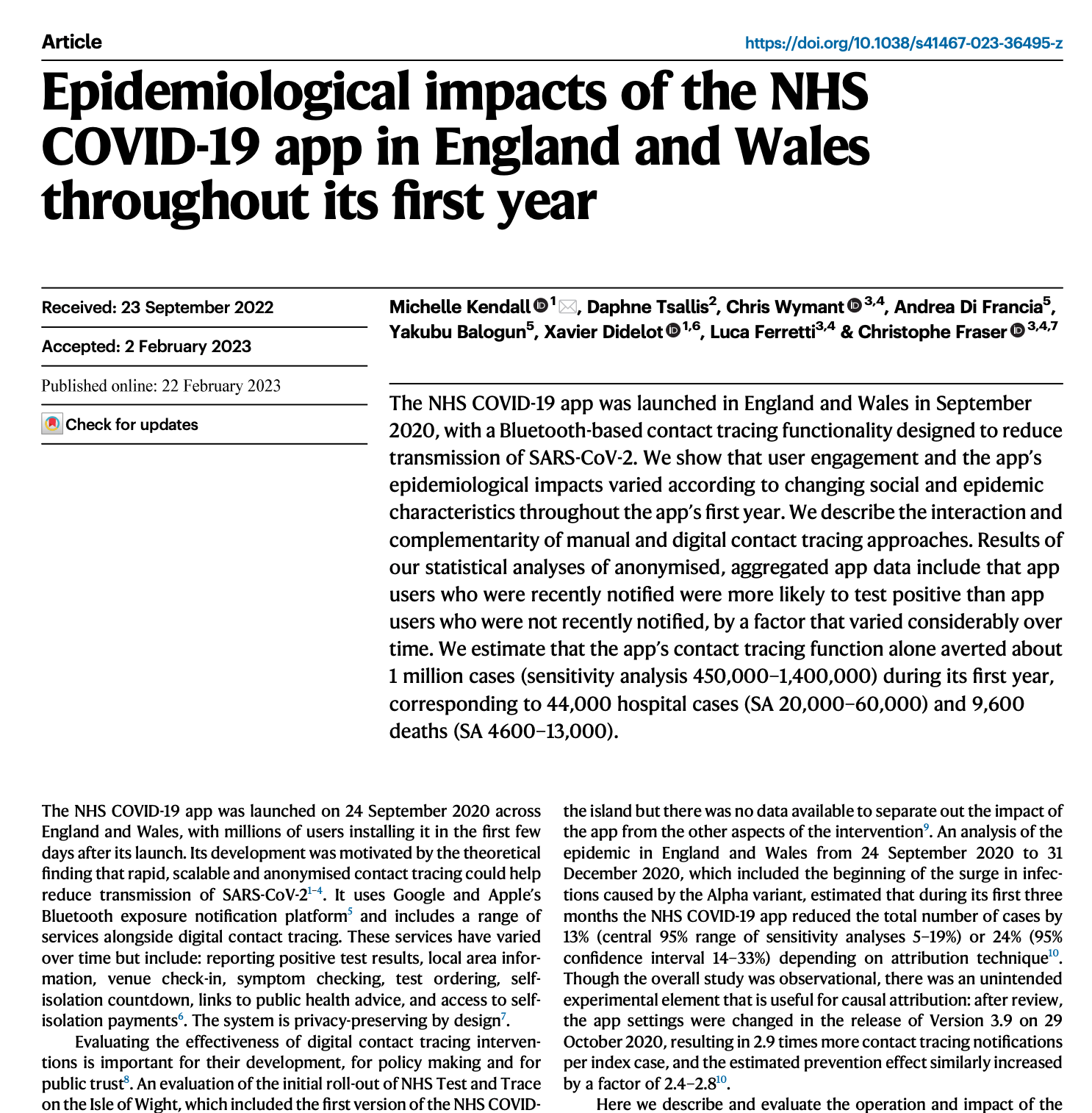
Epidemiological impacts of the NHS COVID-19 app in England and Wales throughout its first year
The NHS COVID-19 app was launched in England and Wales in September 2020, with a Bluetooth-based contact tracing functionality designed to reduce transmission of SARS-CoV-2. We show that user engagement and the app’s epidemiological impacts varied according to changing social and epidemic characteristics throughout the app’s first year. We describe the interaction and complementarity of manual and digital contact tracing approaches. Results of our statistical analyses of anonymised, aggregated app data include that app users who were recently notified were more likely to test positive than app users who were not recently notified, by a factor that varied considerably over time. We estimate that the app’s contact tracing function alone averted about 1 million cases (sensitivity analysis 450,000–1,400,000) during its first year, corresponding to 44,000 hospital cases (SA 20,000–60,000) and 9,600 deaths (SA 4600–13,000).
Continue Reading
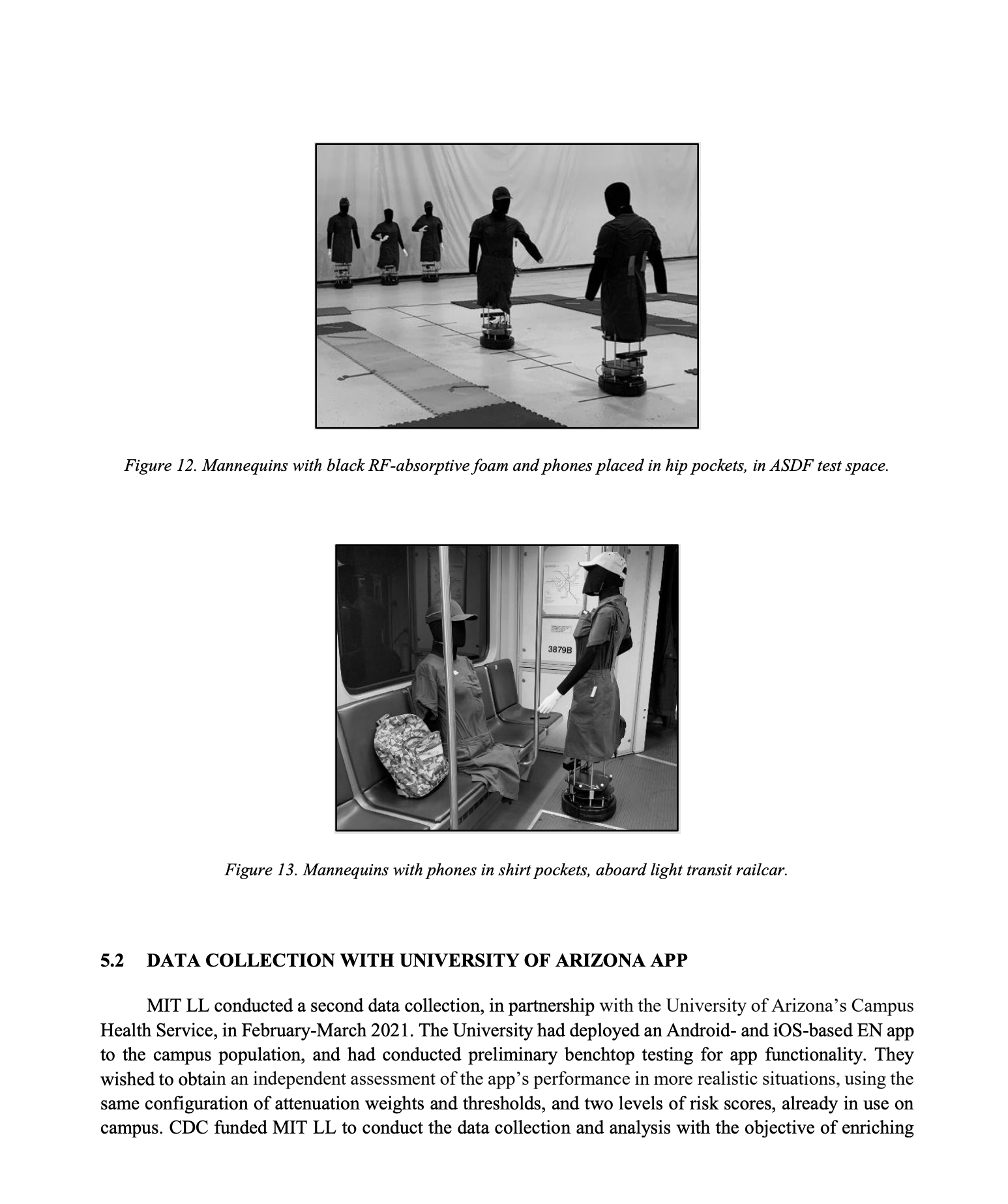
Massachusetts Institute of Technology Lincoln Laboratory: Automated Contact Tracing Assessment
MIT LL conducted a second data collection, in partnership with the University of Arizona’s Campus
Health Service, in February-March 2021. The University had deployed an Android- and iOS-based EN app
to the campus population, and had conducted preliminary benchtop testing for app functionality. They
wished to obtain an independent assessment of the app’s performance in more realistic situations, using the
same configuration of attenuation weights and thresholds, and two levels of risk scores, already in use on
campus. CDC funded MIT LL to conduct the data collection and analysis with the objective of enriching
33 the BLE exposure dataset, using various models of phones on both operating systems.
Continue Reading
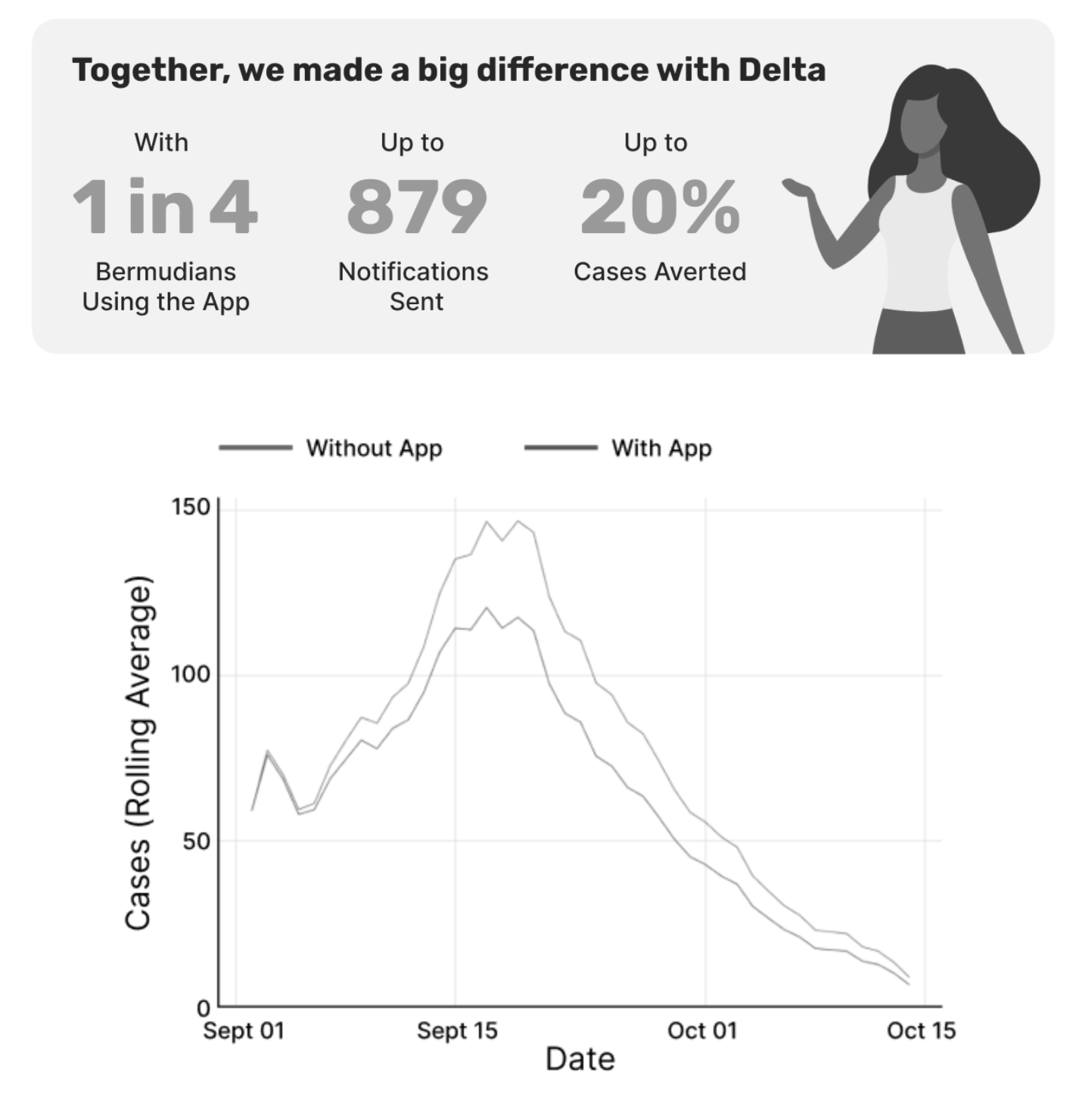
WeHealth's Impact during Delta Wave in Bermuda
WeHealth estimated that Bermudians using the app may have helped avert up to 20% of the total case load during the Delta wave. Based on our projections this 20% reduction helped preserve roughly a week of normal economic activity.
Continue Reading
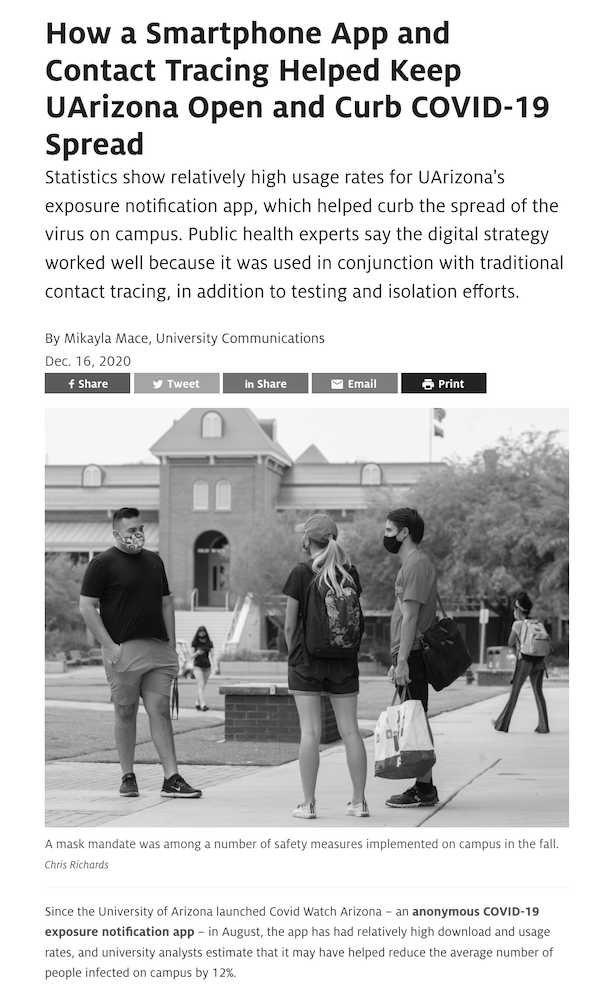
How a Smartphone App and Contact Tracing helped keep UArizona open and Curb Covid-19 spread.
In June of 2020, the University of Arizona first announced that it would begin a pilot of the WeHealth Arizona app (formerly known as Covid Watch Arizona) as part of a comprehensive strategy to help students successfully, and safely, return back to campus in the fall. The results demonstrated an estimated 11% reduction in R(t)(rate of transmission) and a 47% rate of adoption among those infected. Why does this matter? That 11% compounds exponentially with each wave of cases. More importantly, it demonstrates that the true power of this technology lies with its users. That's you.

